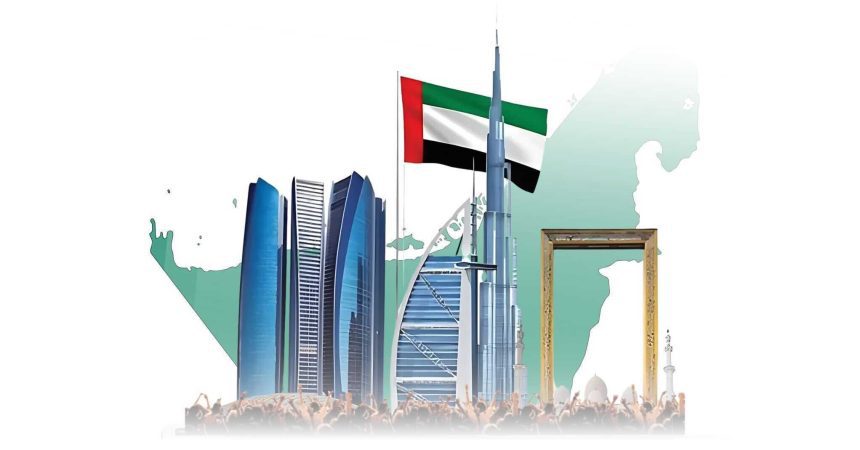4 Decades and the Population Growth Continues
The United Arab Emirates (UAE) has witnessed a remarkable growth in population over the past four decades.
Moreover, the country has changed from a small population in 1980 to a bustling nation with over 10 million by 2023.
This surge reflects the rapid economic development and the high demand on labor.
As well as the continued investment in modern infrastructure.
We will explore the UAE’s population growth patterns between 1980 and 2023 together.
Population of UAE in the 1980s: A Growth Foundation
The UAE’s population was around 1 million in the early 1980s.
The oil discovery in the 1960s set the stage for economic growth.
It also attracted foreign investments and prompted infrastructure projects.
As a result, workers from neighboring Arab countries, South Asia, and Southeast Asia came to the UAE.
The workers helped in meet the demands of the fast-growing economy.
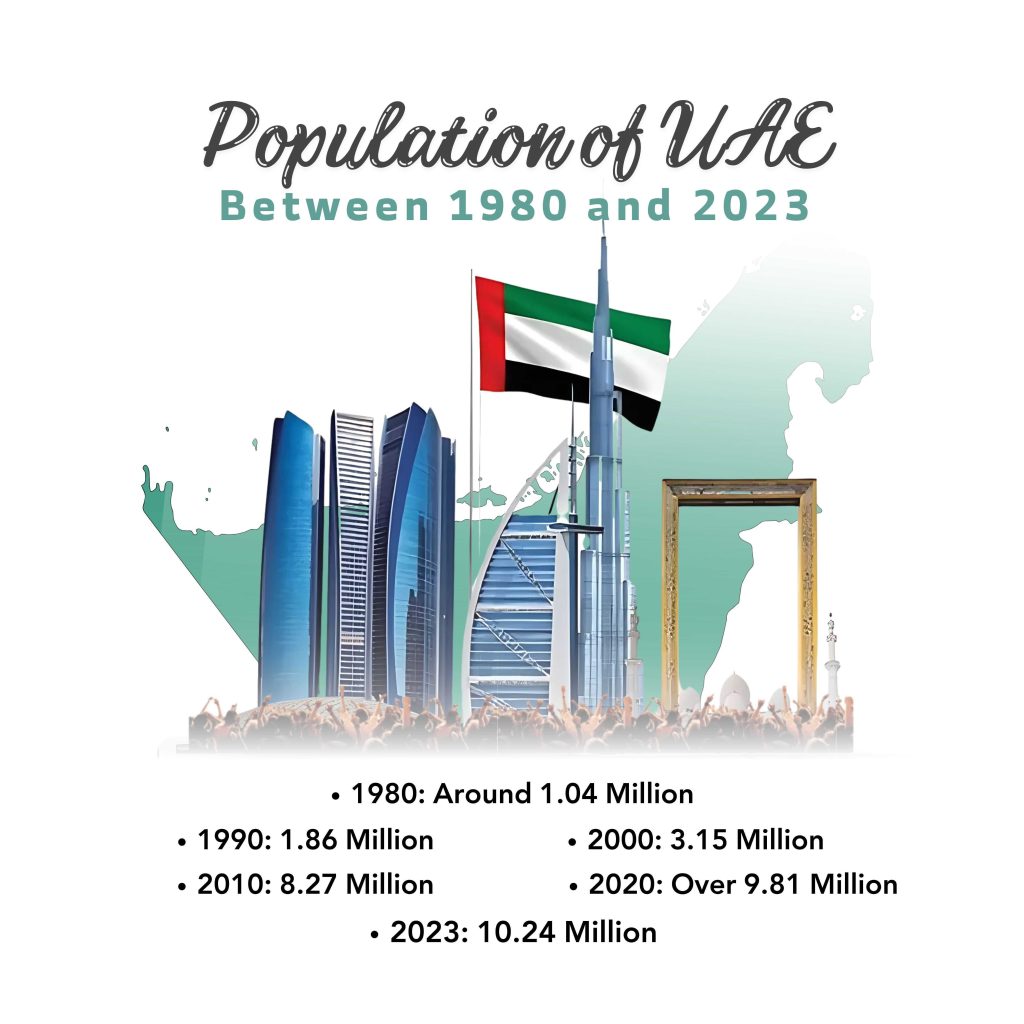
Economic Boom of the 1990s and 2000s
In the 1990s, the population of UAE started to grow at a faster rate.
It has reached over 3 million by 2000.
This period witnessed the rise of Dubai and Abu Dhabi as economic hubs.
With new sectors like real estate, finance, tourism, and construction.
Those sectors experienced substantial growth.
The UAE required an expanded workforce, as industries diversified beyond oil.
It has also attracted professionals, laborers, and specialists worldwide.
Government Policies Encouraged Foreign Businesses
The UAE government implemented policies encouraging foreign businesses.
Such as free zones and economic incentives.
These initiatives accelerated urbanization, transforming the UAE into a global business destination.
With Dubai and Abu Dhabi as the focal points.
By 2010, the population reached around 8.3 million.
It was largely composed of expatriates who moved to get job opportunities and a better quality of life.
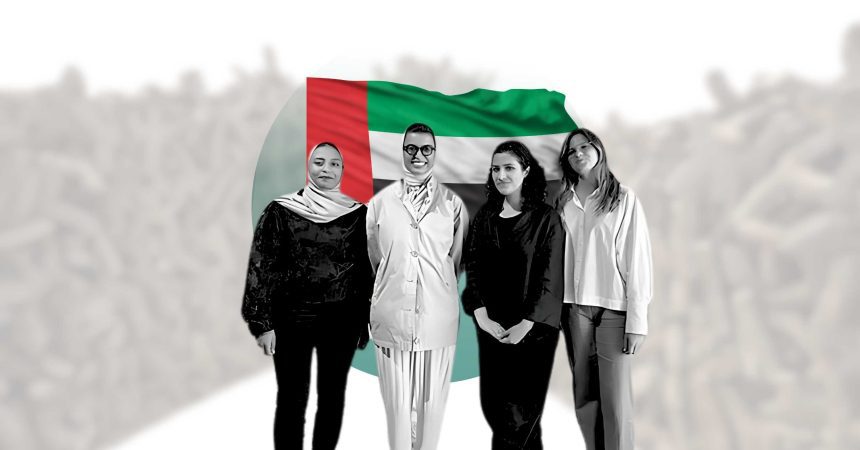
Population of UAE between 2010 & 2023: Continued Expansion
The UAE’s population continued to increase between 2010 and 2023, but with a more moderate pace.
By 2023, the UAE population reached about 10.24 million.
This continued growth key drivers include:
Investment in the Infrastructure
The UAE government has invested heavily in infrastructure, education, healthcare, and tourism.
Those investments increased the country attractiveness for both businesses and workers.
Expo 2020
Hosting Expo 2020 by Dubai attracted a big number of visitors and temporary workers.
The event has also boosted economic activity and highlighted the UAE’s role as a global hub for innovation.
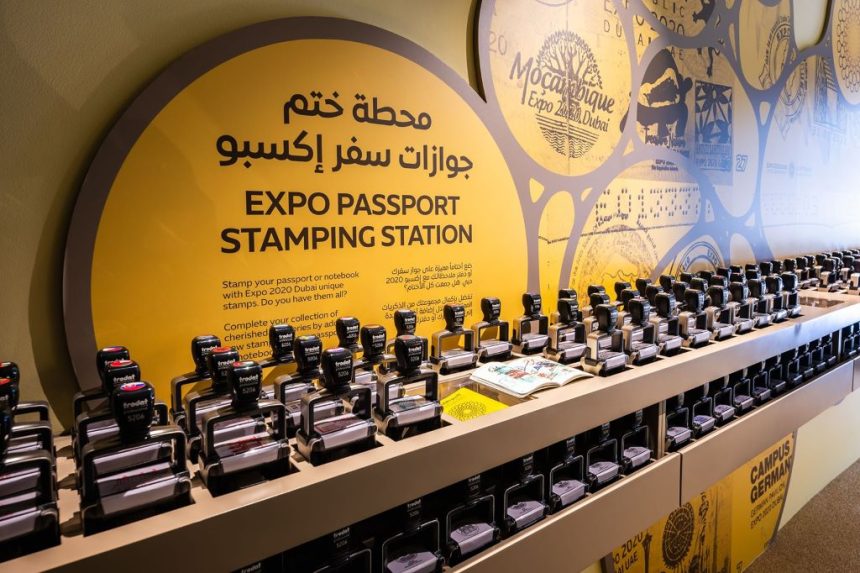
New Residency Options
The UAE has introduced many residency options, such as the Golden Visa.
Those options attract skilled professionals, investors, and entrepreneurs.
They also encourage expatriates to come to the UAE.
Because it is a long-term home, which contributes to more growth in population.
Quality of Life
Many factors have made the UAE a preferred destination for expatriates from all over the world.
Such as the UAE’s modern amenities, safety and healthcare.
As well as educational opportunities.

Demographic Composition and Expatriate Population
The significant expatriate population is a unique aspect of the UAE’s population.
By 2023, more than 85% of the population composed from expatriates.
Most expatriates are coming from India, Pakistan, the Philippines, and Egypt.
This diverse demographic composition has created a multicultural environment, that includes:
Various languages, cuisines, and cultural influences, enriching the UAE society.
Factors Contributing to Growth in UAE Population
Several factors have contributed to the growth of UAE population between 1980 and 2023, those factors include:
Diversified Economy:
Focus was transitioned from oil to other sectors, this has opened a wide range of employment opportunities.
Political Stability and Safety:
The UAE’s stable governance and low crime rates made it a secure destination for families and professionals alike.
Global Connectivity:
The UAE’s position as an international aviation hub made it an ideal location for business and travel.
Drawing the attention of expatriates who value accessibility.
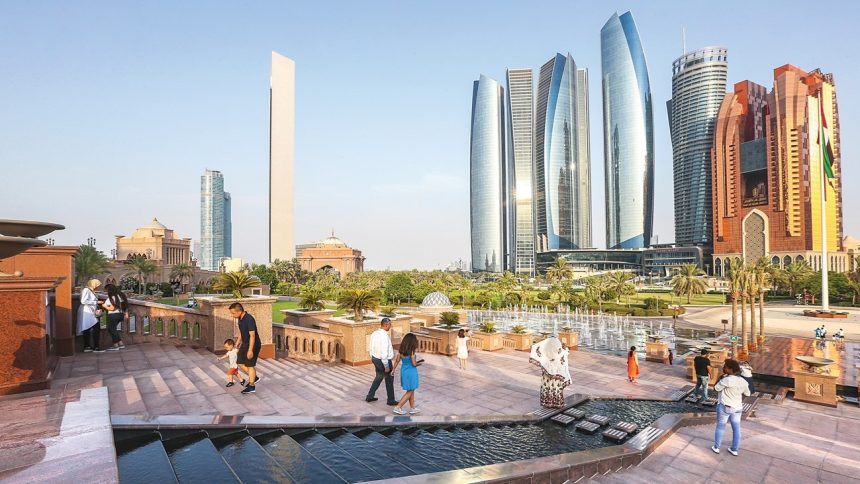
Impact of Population Growth on UAE Society
The growth of UAE population has transformed it into a vibrant, multicultural society.
Moreover, the demand on housing, transportation, and services has led to extensive urban development.
Particularly in cities like Dubai and Abu Dhabi.
However, the growth has also presented new challenges, including the need of:
Sustainable resources, housing, and healthcare systems to meet the demands of the growing population.
Fitch Ratings expects the Middle East economy to grow by more than 3% in 2025, with the UAE expected to lead the region. pic.twitter.com/p2KL8Pjua5
— UAE Voice (@uae_voiceeng) October 28, 2024
Population of UAE: Interesting Journey from 1 Million to 10 Million
The UAE’s journey from a modest population in 1980 to over 10 million in 2023 reflects its strategic economic planning.
As well as its openness to global talent.
The UAE will remain a leading destination for expatriates.
Due to its ambitious plans for sustainable development and innovative reforms.
As the country continues to grow, its focus on three factors will shape the cultural landscape.
Those factors include: Sustainability, technology, and the high quality of life.
This growth trajectory demonstrates the UAE’s remarkable transformation into a global hub for business, innovation, and cultural exchange.


